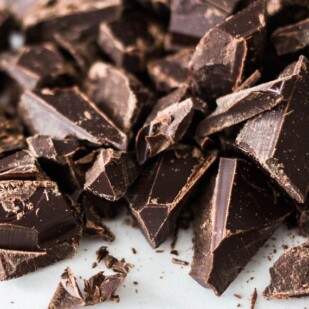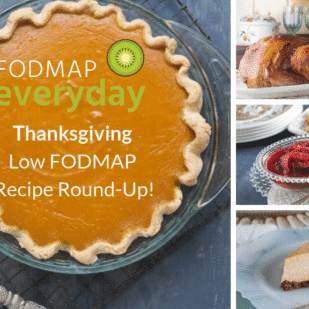If you are following a vegan diet, knowing what protein sources are appropriate is key to a nutritionally balanced approach. Increasingly, people with digestive and health issues are turning to a vegan diet, and the low FODMAP diet is often recommended for those with irritable bowel syndrome (IBS), hence these two diets are colliding more and more. This article is about vegan protein sources that are appropriate for those following the low FODMAP diet. It is all about serving sizes!

For general nutrition information about a low FODMAP vegan diet, please read our article, Expert Tips on Nutrition For Vegans Following The Low FODMAP Diet.
Use the Table of Contents to be able to jump to the sections you want to read.
- Low FODMAP Vegan Protein At a Glance
- What Is Protein?
- What Is Complete Protein?
- How Much Protein Do You Need?
- Do Vegans Need to Consume More Protein?
- Is Plant Based Protein More or Less Digestible Than Animal Protein?
- Do I Need to Combine Proteins to Create Complete Proteins?
- When We Reference “Complete” Proteins, Do The Amino Acids Have to be Present in a Particular Amount or Ratio?
- How Do You Define High Quality Protein?
- Does It Matter When I Consume Protein?
- What Are The Best Vegan Proteins?
- How Our Serving Sizes & Protein Amounts Are Determined
- Soy & Low FODMAP Vegan Protein
- Legumes, Pulses & Low FODMAP Vegan Protein
- Cooking Method Affects Protein Content & Availability in Legumes
- Quinoa & Low FODMAP Vegan Protein
- Sacha Inchi & Low FODMAP Vegan Protein
- Sunflower Seeds & Low FODMAP Vegan Protein
- Pistachios & Low FODMAP Vegan Protein
- Hemp Seeds & Hearts & Low FODMAP Vegan Protein
- Chia Seeds & Low FODMAP Vegan Protein
- Spirulina & Low FODMAP Vegan Protein
- Buckwheat & & Low FODMAP Vegan Protein
- Nutritional Yeast & Low FODMAP Vegan Protein
- Seitan & Low FODMAP Vegan Protein
- Sprouted Grain Bread & Low FODMAP Vegan Protein
- Sprouted Wheat & Low FODMAP Vegan Protein
- Rice & Low FODMAP Vegan Protein
- Farro & Low FODMAP Vegan Protein
- Millet & Low FODMAP Vegan Protein
- Wild Rice & Low FODMAP Vegan Protein
- Meal Planning for Protein
Low FODMAP Vegan Protein At a Glance
The Table of Contents above can help you navigate to sections of interest to you. We think the entire article is worth a read, but if you want to jump quickly to see our downloadable list of over 50 low FODMAP vegan protein sources, here you go!
You will find vegan low FODMAP protein sources; their low FODMAP serving size and associated amount of protein per grams; protein per 100 g of food for easy comparison; and maximum low FODMAP serving sizes and associated protein.
Click on the Red Button below!
What Is Protein?

Let’s first look at what protein is, and why it is an important consideration.
Protein is one of the three macronutrients, along with fat and carbohydrates. Proteins consist of chains of molecules called amino acids, and there are 20 amino acids that the body utilizes for protein synthesis. There are essential amino acids, nonessential amino acids, and conditional amino acids.
Essential Amino Acids

Among these 20 amino acids, 9 are considered, and referred to as, “essential amino acids”, because the body lacks the capacity to generate them, necessitating their intake from food sources.
Essential amino acids hold a pivotal role within the human body, participating in a multitude of vital processes, including tissue growth, energy generation, immune system support, and the efficient absorption of essential nutrients. Essential amino acids serve as the fundamental building blocks of proteins, thereby being indispensable for the growth, repair, and ongoing maintenance of bodily tissues. Furthermore, they play a crucial role in the synthesis of hormones and neurotransmitters, which wield influence over an array of bodily functions.
Here are the 9 essential amino acids:
- Histidine: Histidine contributes to the synthesis of a vital brain chemical known as histamine, which plays a pivotal role in various aspects of your body’s functioning, including immune responses, digestive processes, sleep regulation, and sexual function.
- Isoleucine: Isoleucine plays a key role in your body’s muscle metabolism and immune system function. Additionally, it assists in the production of hemoglobin, the oxygen-carrying protein in red blood cells, and helps regulate energy levels.
- Leucine: Leucine is essential for protein synthesis and the production of growth hormones. It plays a crucial role in muscle tissue growth and repair, facilitates wound healing, and aids in the regulation of blood sugar levels.
- Lysine: Lysine is intricately involved in hormone production and energy generation within the body. Furthermore, it plays a significant role in calcium absorption and supports immune system function.
- Methionine: Methionine contributes to tissue growth, metabolic processes, and detoxification mechanisms in the body. Additionally, it assists in the absorption of essential minerals like zinc and selenium.
- Phenylalanine: Phenylalanine is a precursor for important brain chemical messengers, including dopamine, epinephrine, and norepinephrine. It also participates in the production of other essential amino acids.
- Threonine: Threonine is crucial for the formation of structural proteins like collagen and elastin, which provide support to the skin and connective tissues. It also plays a role in blood clot formation, thereby helping to prevent excessive bleeding. Threonine contributes to fat metabolism and supports the immune system.
- Tryptophan: Tryptophan is essential for maintaining the body’s nitrogen balance and is involved in the production of the neurotransmitter serotonin. Serotonin plays a central role in regulating mood, appetite, and sleep.
- Valine: Valine is instrumental in muscle growth, tissue regeneration, and energy production within the body’s metabolic processes.
Nonessential Amino Acids
The remaining 11 amino acids are nonessential, as they can be synthesized by the body using the 9 essential amino acids as building blocks.
In general, nonessential amino acids play important roles in various bodily functions, such as muscle growth, tissue repair, hormone production, and brain function.
- Alanine: Removes toxic substances released from the breakdown of muscle protein during intensive exercise.
- Arginine: Acts as a precursor for nitric oxide, which can help lower blood pressure and boost erectile dysfunction in men.
- Asparagine: Helps maintain the balance of the nervous system.
- Aspartic acid: Helps remove excess toxins from the body.
- Cysteine: Involved in production of collagen and keratin.
- Glutamic acid: Helps improve brain function.
- Glutamine: Can support and improve gut health.
- Glycine: Helps produce collagen and keratin.
- Proline: Helps produce collagen and cartilage.
- Serine: Helps produce phospholipids and purines.
- Tyrosine: Helps produce neurotransmitters and hormones.
Conditional Amino Acids

Some nonessential amino acids are classified as conditional, as they are only considered essential when you are ill, stressed, or during pregnancy or infancy. Conditional amino acids include arginine, cysteine, glutamine, glycine, ornithine, proline, serine, and tyrosine.
It is important to note that by diversifying your intake of plant-based proteins, you can ensure adequate consumption of all the essential amino acids required by the body.
What Is Complete Protein?
A complete protein contains all 9 essential amino acids, in particular amounts and ratios. Animal-derived proteins are complete proteins, including beef, poultry, fish, and eggs; they also contain no FODMAPs, but they are not vegan.
Plant-based foods may be deficient in at least one essential amino acid. For example, cysteine and methionine are found in limited quantities in most beans, lentils, peas, and certain vegetables. Similarly, grains, nuts, and seeds tend to be deficient in lysine. This is why you might often hear that plant sources are “incomplete protein”; however, it is important to note that by diversifying your intake of plant-based proteins, you can ensure adequate consumption of all the essential amino acids required by the body.
How Much Protein Do You Need?

The amount of protein you need will vary as it is not a one-size-fits-all situation. Variables include gender, age, weight as well as lifestyle. A sedentary person will have different needs from an athlete.
Research consistently indicates that, on average, vegan and vegetarians meet or exceed their protein requirements. The RDA (recommended dietary allowance) for protein stands at 0.8 grams of protein per kilogram (2.2 pounds) of body weight.
To put this in perspective, it translates to approximately 0.4 grams of protein per pound of body weight. For instance, if you weigh 150 pounds, this would amount to around 60 grams of protein daily, a target that can be achieved through a well-balanced plant-based diet.
If you are particularly active, have medical conditions that require particular nutrition, or if you are following any other kind of restrictive diet, such as low FODMAP, it is highly recommended that you work with a Registered Dietitian to make sure you are receiving enough protein, while also adhering to additional medical and dietary needs, and retaining a healthy relationship with food.
Research consistently indicates that, on average, vegan and vegetarians meet or exceed their protein requirements. The RDA (recommended dietary allowance) for protein stands at 0.8 grams of protein per kilogram (2.2 pounds) of body weight.
Do Vegans Need to Consume More Protein?

The official recommended daily allowance (RDA) for protein for adults are the same regardless if they are vegans or omnivores. However, it can be noted that the nitrogen balance studies that determined protein requirements used animal protein in the diets. Protein needs do increase with increased stress (exercise, surgery, wounds), and with age to maintain muscle mass.
According to a position paper by The Academy of Nutrition and Dietetics, a planned thoughtful diet rich in a variety of vegan foods can provide enough protein to meet the RDAs despite the biochemical differences between plant and animal protein. It can be suggested that due to the decreased bioavailability of plant proteins and strict combinations needed, protein needs would be increased with a vegan diet, however, this is not officially supported by studies.
Is Plant Based Protein More or Less Digestible Than Animal Protein?
Animal and plant proteins are fundamentally different from each other given their chemical structure. Therefore, plant and animal proteins are digested differently. Plant based proteins commonly have a secondary structure of beta sheets. Compared to alpha helices (these are sequences of amino acids in a protein that are twisted into a coil/helix), common in animal protein, beta sheets are less easily digested. This can be attributed to the hydrophobic nature of beta sheets (they repel water), leading them to form aggregates (clumping together) and thus decreased absorption.
Additionally, plant proteins have non digestible fibers that can decrease the effects of enzymes that break down protein into amino acids. In addition to fiber, plants also have bioactive compounds that are usually praised, but can negatively affect protein absorption. A few of these bioactive compounds include tannins, phytic acid, and gossypol. Each mechanism is different, however, the outcomes are usually all the same – lower protein absorption.
Although raw plant proteins are less easily digested by the body, plant proteins can be consumed raw or processed which can affect the overall absorption of the product. Protease inhibitors are present in plants and decrease the absorption of amino acids, specifically trypsin. These protease inhibitors can be inactivated by heating or processing. Pea protein isolate, what a consumer might find in a vegan protein powder, is processed in a way that decreases the activity of the protease inhibitors. This allows pea protein to be a comparable protein to casein, which is a derivative of milk.
This being said, plant proteins have great things to offer in terms of fiber, micronutrients, bioactive compounds, and environmental impact. Protein quality is not the only lens with which to look at food.
Do I Need to Combine Proteins to Create Complete Proteins?

No, you do not have to combine proteins to create complete protein.
There is an antiquated idea that one had to combine incomplete proteins at the same meal in order to “create” a complete protein picture for your digestion and health. This is not necessary.
If you eat a variety of vegan protein sources daily, and sufficient calories in general, you will be able to obtain enough high quality protein.
When We Reference “Complete” Proteins, Do The Amino Acids Have to be Present in a Particular Amount or Ratio?
Nine amino acids are necessary for survival but cannot be manufactured by the body, so we look to food sources to obtain them. A complete protein is characterized by a food that contains all 9 essential amino acids. Not only do all 9 amino acids need to be present, but they also need to be present in sufficient amounts.
The wording “complete” and “incomplete” can be misleading. Plant foods can contain all 20 amino acids, including the 9 deemed essential, however, some of the amino acids will be in very small amounts. The “limiting” amino acid is the amino acid with the least presence in an incomplete protein.
This amino acid, alone or in combination with other amino acids, makes the protein incomplete. The threshold of amino acids needed to make a food a complete protein is not well researched, however, it is generally accepted that a balanced diet in plant food can provide sufficient amino acids to support protein manufacturing within our bodies.
NOTE: The following chart is for general protein information – NOT FODMAP or vegan specific.

How Do You Define High Quality Protein?
High quality protein can be defined as protein that provides all essential amino acids in sufficient amounts for necessary maintenance of bodily function and muscle growth. The FDA currently uses the Protein Digestibility-Corrected Amino Acid Score (PDCAAS) to measure protein quality in most foods, whereas the Canadian government utilizes the Protein Efficiency Ratio (PER). According to these metrics, animal sources of protein tend to rank higher than plant sources of protein because of high digestibility and a distribution of the 9 essential amino acids, whereas the food matrix of plant proteins partially impairs digestion and the essential amino acid distribution can be proportionally low, relative to dietary requirements, in one or more. For example, grains tend to be proportionally low in lysine, whereas legumes are proportionally low in methionine. However, when a variety of plant protein sources are consumed in sufficient quantities, as would be true of almost any dietary pattern that includes appropriate variety and quantity to meet other nutrient requirements, needs for essential amino acids can be met without any animal protein intake. The risk of protein inadequacy is low for most population groups in the United States. Therefore, the rationale for defining protein quality as a function of a food’s essential amino acid composition is of questionable validity, at least for the populations of developed countries.
Protein quality also needs to consider the health implications of the protein source such as processed meats and fat content. For example, consumption of certain animal sources of protein is associated with higher chronic disease risk, whereas consumption of protein-rich plant foods and adherence to plant-based dietary patterns are associated with more favorable health outcomes. The production of animal sources of protein also has a more substantial impact on the environment, although there is considerable variation within and across animal proteins.
Does It Matter When I Consume Protein?

The timing of protein consumption is shown to have an impact on muscle synthesis and overall net balance of protein within the body. Often, people tend to eat a larger amount of protein at dinner and less protein for breakfast and snacks, which is not optimal.
According to a randomized-control trial conducted by the University of Copenhagen, Denmark, evenly distributing protein intake between each meal versus skewed protein intake towards a certain meal improves absorption of amino acids and the overall balance of protein within the body. When skewing protein intake towards one meal, insufficient absorption of essential amino acids can occur. Greater concentrations of amino acids were found within the evenly distributed protein group versus the skewed protein group within the study.
Evenly distributing protein intake throughout the day promotes muscle synthesis and maintenance of muscle mass, especially in the older adult population. It also contributes to satiety, and helps regulate appetite, control cravings and maintain a stable body weight.
Studies in athletes show that a consumption of a large amount of protein at one time is not desired since it stimulates protein oxidation. It is instead recommended to evenly distribute protein intake into 4 to 5 smaller meals or snacks throughout the day. Protein is also needed immediately after exercise to enhance muscle growth and repair, and the recommended dose after exercise is 0.3g per kg of body weight.

What Are The Best Vegan Proteins?
The best vegan proteins are soy, legumes (which includes pulses and beans), seeds, nuts, as well as whole grains, seitan, spirulina, and nutritional yeast. Sprouted grain bread can be a great source too, but formulations vary considerably.
Luckily, there are low FODMAP amounts of all of these vegan protein sources.
Let’s look at these various plant-based protein sources one at a time.
How Our Serving Sizes & Protein Amounts Are Determined

Protein amounts sourced from USDA database, Canadian Nutrient File, and from manufacturers of certain prepared and packaged products. Low FODMAP amounts are determined by laboratory testing by Monash University and FODMAP Friendly, and are correct as of the publication of this article (subsequent lab testing could show different results).
Please note that serving sizes in the Monash University and FODMAP Friendly apps are often guided by Australian government healthy eating guidelines. In addition, U.S. serving sizes are fairly random and explained in our article, How to Read a FDA Nutrition Facts Label, which we suggest that you review.

Soy & Low FODMAP Vegan Protein
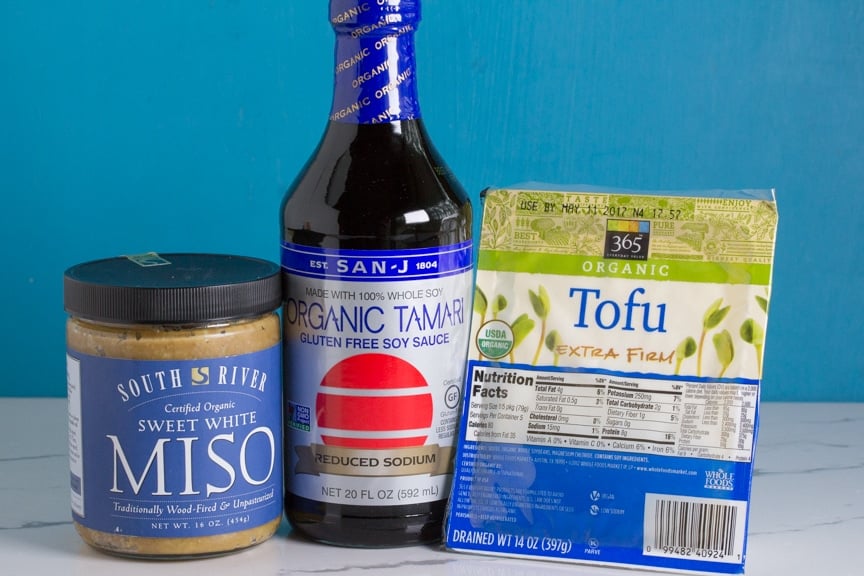
Soy-based products stand out as prominent sources of complete vegan proteins; protein content varies based on soy product. Some countries refer to “soy”, while some refer to “soya”. They are the same thing.
Whole mature soybeans contain a significant amount of the FODMAP galacto-oligosaccharides (GOS) stachyose and raffinose, however many soy products have low FODMAP serving sizes. It is important to note that mature soy beans, which could be eaten as is, or dried and roasted and used to make soy based products or flour, have no known low FODMAP serving size.
For general information about soy and the low FODMAP diet, please refer to our articles:
If a soy product does not have a lab tested and reported low FODMAP serving size, such as soy flour, it will not be listed.
Tofu
Different types of tofu contain different FODMAP levels:
- Firm or Extra Firm Tofu, drained: The Monash University and FODMAP Friendly lab tested low FODMAP serving is 170 g, which provides about 17 g of protein
- Silken Tofu, drained: The Monash University lab tested low FODMAP serving is 39 g, which provides about 1.8 g of protein. FODMAP Friendly did not find a low FODMAP serving.
Tempeh
Tempeh is a fermented soy product and the fermentation lowers the FODMAP content. The Monash University lab tested low FODMAP serving is 100 g, which provides 19.9 g of protein; no further information is provided.
Edamame
Edamame are immature soybeans.
Monash University lab tested frozen and shelled edamame. Their low FODMAP serving is ½ cup (90 g), which provides 9 g of protein; according to their testing, they become Moderate for FODMAPs at 1 ¼ cups (210 g).
FODMAP Friendly does not indicate fresh or frozen. Their lab tested low FODMAP serving is 1 cup (168 g), which would be 18 g of protein. Their tests showed a max serving of 2 cups (336 g), which is 36 g of protein.
Soy Milk
Different types of soy milk contain different FODMAP levels.
- Soy milk made from “hulled soybeans”: Monash University lab tested low FODMAP serving size is ¼ cup (60 ml) providing 3 g of protein; it becomes Moderate for FODMAPs at ½ cup (120 ml). FYI Edensoy Unsweetened Organic soy milk is made from hulled soybeans (per conversation with manufacturer).
- Soy milk made from “soybeans” (suggesting whole): Monash University lab tested low FODMAP serving size varies depending on country of origin, but ranges from 30 ml to 40 ml, which provides about 1.5 g protein. FODMAP Friendly reports no low FODMAP serving.
- Soy milk made from soy protein: Monash University lab tested low FODMAP serving size of a generic brand is 1 cup (257 ml) providing 8 g protein; no further information is given. FODMAP Friendly lab tested low FODMAP serving 1 cup (250 ml); max serving 3 cups (750 ml).
- Taiwanese Sweetened Black Soy Bean Milk: Monash University lab tested low FODMAP serving size of generic brand is ¼ cup (60 ml) providing about 1.89 g per serving.
How to Buy and Store
Soy products vary, so no there is no one suggestion. Immature green edamame are convenient when purchased frozen and have a fairly long storage-life. Tofu, soy milks and tempeh will come prepackaged with a use-by date, as examples.
How to Use
Where to begin? We love making stir-fries with tofu, or blending to make a dip. We use tofu in salads, soups and stews. Ditto with tempeh. We enjoy eating edamame as a snack with a little coarse salt. We enjoy low FODMAP soy milk with hot and cold cereals.
Low FODMAP Vegan Soy Recipes
- Low FODMAP Tofu Salad
- Za’atar Spiced Low FODMAP Tofu Scramble
- Low FODMAP Kimchi Tofu Stew (using vegetable broth and vegan kimchi)
- Low FODMAP Coconut Tofu Curry (using low FODMAP vegan fish sauce)
- Low FODMAP Asian Tofu Noodle Salad with Papaya (using low FODMAP vegan fish sauce)
- Low FODMAP Cold Soba Soup
- Low FODMAP Baja Tempeh Taco Salad
- Low FODMAP Tempeh Lentil Chili with Butternut Squash
Legumes, Pulses & Low FODMAP Vegan Protein

What are legumes? The term “legume” encompasses all types and forms of beans, pulses, and peas that come from the Fabaceae (or Leguminosae) botanical family. In other words, all beans, pulses and peas are legumes; legumes are the parent category.
What are pulses? Pulses are the edible seeds of plants in the legume family. Pulses grow in pods. So, for instance, a pea pod is a legume, but the pea inside is the pulse. Some common pulses are dry peas (such as black eye, split green, chana dal, etc.), chickpeas, and lentils.
100 g is the average size serving set by the FDA for legumes and pulses (it varies a bit whether they are canned, drained, or cooked from scratch), however low FODMAP servings vary depending on specific legume and pulse.
In general, there is about 8 g of protein per 100 g of cooked pulses.
Let’s look at legumes and pulses in relationship with FODMAPs:
Peanuts
Peanuts, or “groundnuts” as they are known in some parts of the world, are the edible seeds of a legume, and they are so popular, they get their own section here. We can eat peanuts fresh, dried as a snack, made into peanut butter, and of course as peanut oil (pure oils of any kind contain no FODMAPs; FODMAPs are carbs. Oils are fats). There is even peanut milk! Since we are talking about protein, we are going to be focusing on peanuts in their protein-rich versions.
Peanuts are a high quality source of protein, although not complete, being somewhat deficient in methionine, and slightly deficient in lysine. The components in peanuts are highly digestible, being comparable with that of animal protein.
Peanuts, being a legume, contain phytic acid which is associated with decreasing the bioavailability of other nutrients due to its binding properties, but the amount in peanuts is lower than compared to other legumes, such as soybeans.
Peanuts & FODMAPs
Peanuts: The Monash University lab tested low FODMAP serving for raw peanuts is currently listed as 32 nuts (28 g), with no further information provided (no Moderate or High FODMAP levels, which is important to note). Previously peanuts were listed in the app as containing no FODMAPs, which would indicate that a larger low FODMAP serving is possible. In fact, FODMAP Friendly reports peanuts have a low FODMAP serving of 30 g, with a max serving of over 600 g! That’s a lot of peanuts (keep this in mind when we discuss peanut butter, below). They do not indicate whether they are raw or roasted.
The 28 g Monash low FODMAP serving provides 7.2 g protein, but you can try a larger serving from a FODMAP perspective. If fat is a trigger for you, watch your consumption.
Peanut Butter & FODMAPs

We had a conversation with Monash researchers about the peanut butter app entries because the U.S. entry (32 g serving size) and the generic entry (50 g serving size) have different low FODMAP serving sizes and we wanted to understand more. FYI FODMAP Friendly lab tests show a low FODMAP serving size of 50 g; max serve 175 g.
First let’s review the three main types of peanut butter available in the store. There is of course a fourth type – fresh ground in store – but we knew that type was not lab tested. Since there is no “processing” (no storage, etc.) other than grinding peanuts, that type could be simply weighed and treated as fresh peanuts, which are listed in the app.
Here are the three commonly commercially available jarred types:
- Natural Peanut Butter (contains peanuts and often salt) has an FDA suggested serving size of 2 tablespoons (32 g) and contains 8 g protein. We like Smuckers.
- Traditional Peanut Butter (with hydrogenated fat) has an FDA suggested serving size of 2 tablespoons (32 g) and contains 7 g protein. Skippy tastes great.
- No-Stir Peanut Butter (with palm oil) has an FDA suggested serving size of 2 tablespoons (32 g) and contains 7 g protein. We use Skippy brand in our Test Kitchen.
Unfortunately, Monash has told us that the U.S. app entry was a lab test of a combination of the hydrogenated oil type and the palm oil type. No one eats both at once on their sandwich, so why they would do this is inexplicable to us, but there you go. At least now we know what the app entry represents. They could not explain why the generic has a larger serving size.
Defatted Peanut Flour
Defatted peanut flour has not been lab tested for FODMAPs, and also has less protein per serving size compared to peanut butter. It does contain less fat, but we are concerned with protein here.
Lentils & FODMAPs

There are many kinds of lentils (brown, green, red) and there are also various ways to obtain them (dry or canned). Both Monash University and FODMAP Friendly have lab tested several types, which we will cover here. Protein content does vary, depending on type and preparation.
Please read our article on Explore An Ingredient: Lentils, which is all about lentils from a FODMAP perspective.
What Is The Difference Between Brown and Green Lentils?
Unfortunately the terms “brown lentils” and “green lentils” are often used interchangeably by brands and in articles. If you buy lentils and they are brownish/greenish and do not specify, chances are they are brown lentils.
According to the Food and Agriculture Organization (FAO), brown lentils can range in color from khaki brown to dark black and have a mild, earthy flavor.
Green lentils can vary in color from a pale or spotted green to a green-slate color with hints of blue and black, and are more robust and peppery than brown lentils.
For FODMAP purposes, between the Monash University app, the FODMAP Friendly app, and discussions with the researchers, it is not always clear what was tested, even though the words “brown” and “green” are used in the apps.
- Lentils, brown, canned: FODMAP Friendly has lab tested these and their low FODMAP serving size is 46 g, with about 2.3 g protein. Max serve is 138 g.
- Lentils, green, canned: FODMAP Friendly has lab tested these and their low FODMAP serving size is 50 g, with about 2 g protein; max serve of 150 g.
- Lentils, green, boiled: Monash University has lab tested these and their low FODMAP serving size is 29 g, becoming Moderate at 34 g. FODMAP Friendly has lab tested these and their low FODMAP serving size is 46 g, with a max serve of 138 g.
- Lentils, le Puy, boiled: Monash University has lab tested these and their low FODMAP serving size has ranged from 30 g to 46 g; they become High for FODMAPs at 90g, with both GOS and fructans present.
- Lentils, red, canned: Monash University has lab tested these and their low FODMAP serving size is 46 g, becoming Moderate for FODMAPs at 65 g.
- Lentils, red, boiled: Monash University has lab tested these and their low FODMAP serving size is 23 g (about 1.75 g protein), becoming Moderate for FODMAPs at 46 g. FODMAP Friendly has lab tested these and their low FODMAP serving size is 46 g, with a max serve of 138 g.
- Lentil pasta, red lentil flour: Monash University has lab tested red lentil flour pasta and it is low FODMAP at a 36 g serving for cooked pasta; it becomes Moderate for FODMAPs quickly, at 42 g for fructans and GOS.
Chickpeas
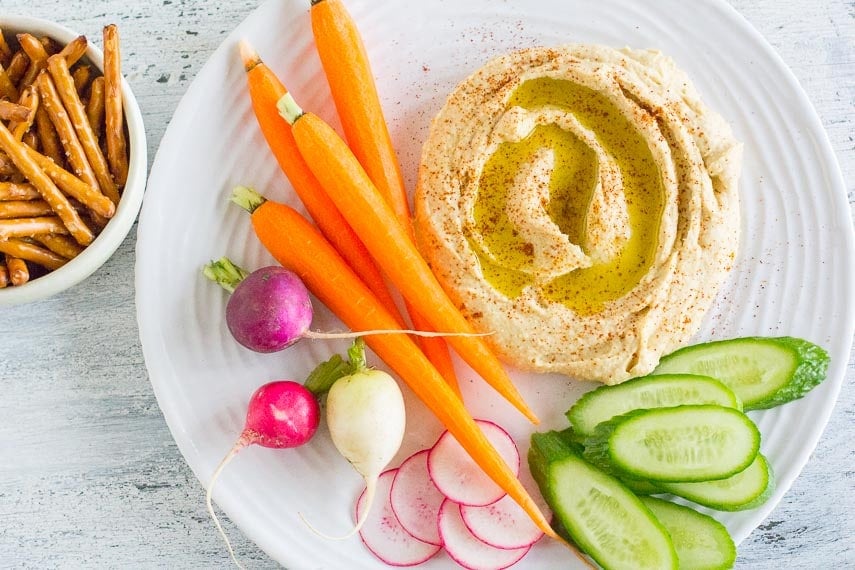
You can cook chickpeas (also called garbanzo beans) from scratch, or find them canned in most every supermarket. Canned drained chickpeas have a lower FODMAP content. FODMAPs are water soluble and therefore some are drained away during that process.
- Chickpeas, canned, drained, rinsed: Monash University has lab tested these and their low FODMAP serving size is 42 g (3 g protein), becoming Moderate for FODMAPs at 84 g (showing GOS; no further information given). FODMAP Friendly has lab tested these and show a low FODMAP serving as 95 g (7 g protein); max serve at 285 g.
- Chickpeas, boiled: Monash University has lab tested these and their low FODMAP serving size is 29 g (2.5 g protein), becoming Moderate for FODMAPs at 33 g (showing GOS), and High for FODMAPs at 108 g (showing GOS and fructans).
- Chickpeas, dried and sprouted: we have included this entry because it is interesting from a FODMAP educational point of view. No known low FODMAP serving. Even 47 g was High FODMAP for GOS.
- Chickpea pasta, cooked: Monash University has lab tested this and the low FODMAP serving size is 100 g cooked, becoming Moderate for FODMAPs at 120 g. We went into the FODMAP Everyday Test Kitchen and determined that chickpea pasta increases in weight by a factor of 2.6. According to the Banza brand, 56 g dry provides 13 g protein. So, if you start with 38.5 g dry chickpea pasta, it will yield 100 g cooked, which is your low FODMAP serving size, and this provides 9 g protein.

Other Beans & FODMAPs
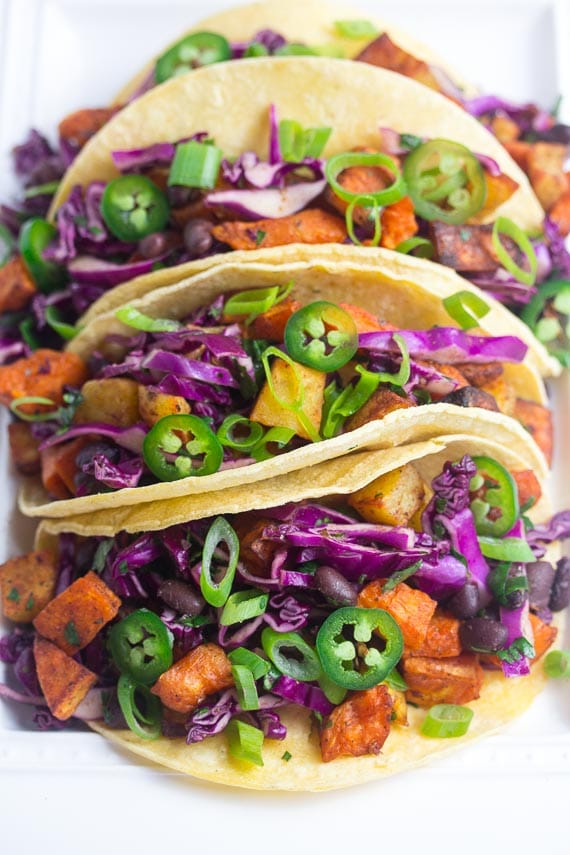
- Black eyed peas, boiled & drained: Monash University has lab tested these and their low FODMAP serving size is 21 g (1.6 g protein), becoming Moderate for FODMAPs at 25 g (showing GOS), and High FODMAP at 170 g (showing GOS and fructans).
- Chana Dal: boiled & drained: Monash University has lab tested these and their low FODMAP serving size is 46 g (approx. 3.8 g protein), becoming High for FODMAPs at 92 g (showing GOS).
- Butter beans, canned & drained: Monash University has lab tested these and their low FODMAP serving size is 35 g (1.7 g protein), becoming Moderate for FODMAPs at 60 g (showing GOS), and High FODMAP at 85 g (showing GOS)
- Black beans, canned & drained: Monash University has lab tested these and their low FODMAP serving size is 40 g (2.7 g protein), becoming Moderate for FODMAPs at 52 g (showing GOS), and High FODMAP at 210 g (showing GOS and fructans). Look up refried low FODMAP servings in the Monash app.
- Black beans, boiled & drained: Monash University has lab tested these and their low FODMAP serving size is 40 g (3.5 g protein), becoming Moderate for FODMAPs at 45 g (showing GOS), and High FODMAP at 105 g (showing GOS and fructans). Look up refried low FODMAP servings in the Monash app.
- Pinto beans, canned & drained: Monash University has lab tested these and their low FODMAP serving size is 55 g (1.6 g protein), becoming Moderate for FODMAPs at 64 g (showing GOS), and High FODMAP at 210 g (showing GOS and fructans). Look up refried low FODMAP servings in the Monash app
- Pinto beans, boiled & drained: Monash University has lab tested these and their low FODMAP serving size is 23 g (2 g protein), becoming Moderate for FODMAPs at 28 g (showing GOS), and High FODMAP at 125 g (showing GOS and fructans). Look up refried low FODMAP servings in the Monash app
- Red kidney beans, canned & drained: Monash University has lab tested these and their low FODMAP serving size is 86 g (4 g protein), becoming Moderate for FODMAPs at 90 g (showing fructans), and High FODMAP at 103 g (showing fructans).
- Adzuki beans, canned & drained: Monash University has lab tested these and their low FODMAP serving size is 38 g (1.7 g protein), becoming Moderate for FODMAPs at 50 g (showing GOS), and High FODMAP at 150 g (showing GOS)
- Adzuki beans, boiled & drained: Monash University has lab tested these and their low FODMAP serving size is 35 g 2.6 g protein), becoming Moderate for FODMAPs at 40 g (showing GOS), and High FODMAP at 150 g (showing GOS and fructans).
- Douchi, fermented black beans: Monash University has lab tested these and their low FODMAP serving size is 15 g (4.2 g protein).
- Cannellini beans, canned & drained: Monash University has lab tested these and their low FODMAP serving size is 75 g (4.3 g protein), becoming Moderate for FODMAPs at 89 g (showing fructans), and High FODMAP at 100 g (showing GOS and fructans).
- Lima beans, boiled & drained: Monash University has lab tested these and their low FODMAP serving size is 39 g (1.8 g protein), becoming Moderate for FODMAPs at 54 g (showing GOS and fructans), and High FODMAP at 79 g (showing GOS and fructans).
How to Buy and Store
You can cook legumes and pulses from scratch, or purchased prepared, with canned being the most common. Convenience might be important, but we suggest you read the section below:
Cooking Method Affects Protein Content & Availability in Legumes. Unfortunately, both protein and fiber content were found to be in lower concentration in canned products.
Both dried beans and canned have long shelf-lives, so you can shop when on sale. Store in an airtight container in a cool dark location.
How to Use
Cooked legumes and pulses can be tossed into salads, or be the main event in a vegan meal, perhaps along with a whole grain and green vegetables.
Low FODMAP Vegan Legume & Pulse Recipes
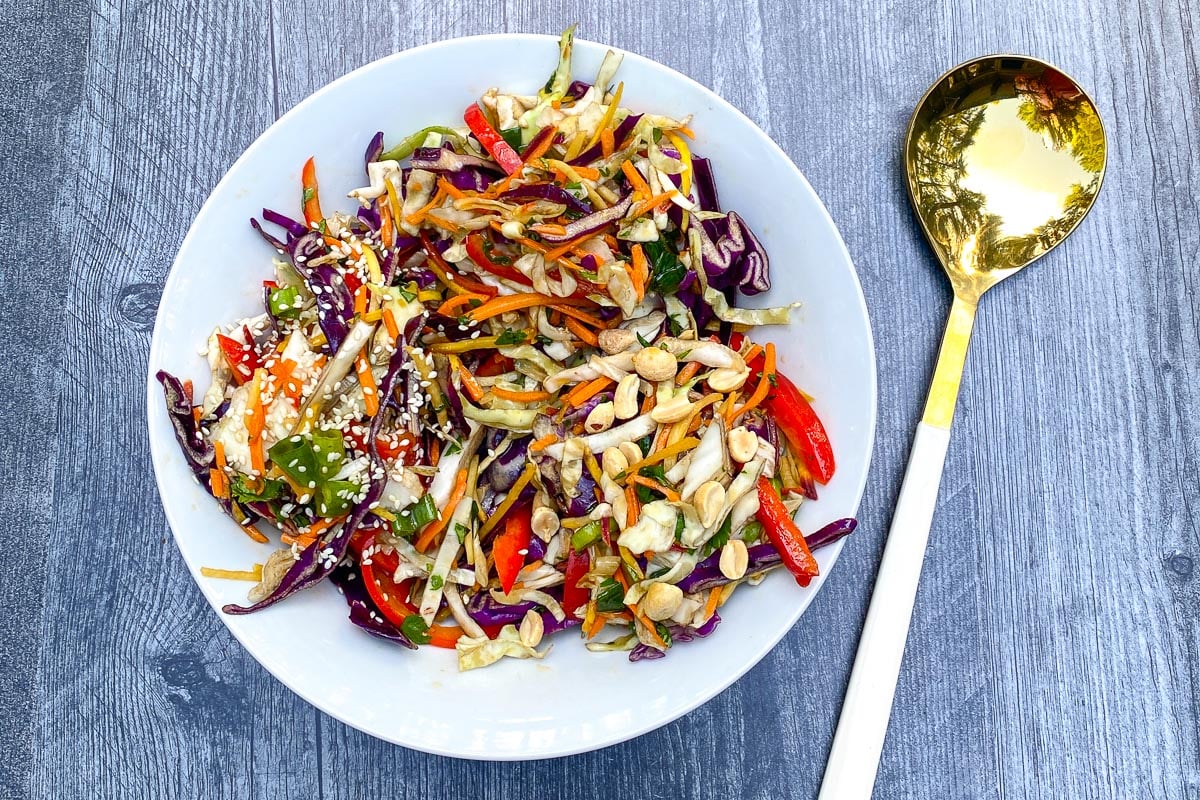
- Low FODMAP Sweet Potato Tacos with Black Beans (made with low FODMAP vegan yogurt)
- Low FODMAP Asian-Inspired Slaw
- Low FODMAP Roasted Chickpeas
- Vegan Low FODMAP Chickpea Salad
- Low FODMAP Zoodles, Noodles & Sprouts Salad
- Low FODMAP Garlicky Peanut Sauce
- Low FODMAP Peanut Lime Sauce
- Low FODMAP Vegan Peanut Butter Cookies
- Low FODMAP Lentil Salad with Yogurt (made with low FODMAP vegan yogurt)
- Low FODMAP Vegetable, Pasta & Bean Soup
- Low FODMAP Hummus
Cooking Method Affects Protein Content & Availability in Legumes

We can cook legumes at home in a variety of ways (soaking, not soaking, stovetop cooking, pressure cooked, etc.), and we can buy canned, already cooked. Buying canned is certainly the easiest route, but is it the best choice from a nutritional standpoint?
Researchers have compared cooking methods and one robust study, which specifically looked at home cooking and canning, did show differences in the resulting nutritional profile of legumes – and canning saw a reduction in protein and fiber, in particular. Kidney beans, for instance, showed 30% less protein when canned versus home cooked, and this was true for both essential and nonessential amino acids.
Vitamins and minerals were not consistent in their decrease or increase. But protein and fiber are often a focus for those eating a vegan diet, so maybe taking the time to cook your legumes at home, starting with dry, should be considered. Specifics of preparation technique are described in the study.
Kidney beans offered the highest protein content, brown lentils the lowest, FYI. Home cooked kidney beans were almost double (1.9%) in protein than canned brown lentils (the study did not look at home cooked brown lentils).
Quinoa & Low FODMAP Vegan Protein
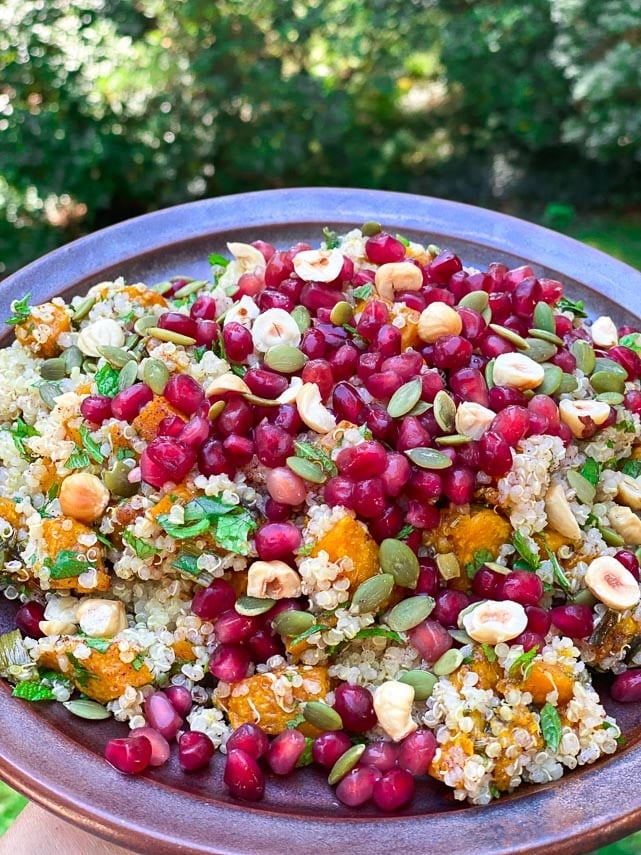
Quinoa Chenopodium quinoa (pronounced keen-wah) is often treated as a grain in recipes (and often referred to as a “whole grain”), but it is actually a seed, and properly referred to as a pseudocereal. It comes in white, black and red varieties, is easy to cook, and is a complete protein.
The seeds have a coating, called saponin, which is quite bitter. This is why many preparation instructions involve rinsing the quinoa before cooking, or you can also look for packages which signify that the quinoa is pre-rinsed, saving you a step.
Please read our Explore An Ingredient: Quinoa for a deep dive into this versatile vegan protein source.
- Quinoa, black: Monash University has lab tested this and the low FODMAP serving size is 155 g (6.8 g protein); no other information given. FODMAP Friendly has lab tested this and the low FODMAP serving size is 75 g, with a max serve of 225 g.
- Quinoa, red: Monash University has lab tested this and the low FODMAP serving size is 155 g (6.8 g protein); no other information given. FODMAP Friendly has lab tested this and the low FODMAP serving size is 75 g, with a max serve of 225 g.
- Quinoa, white: Monash University has lab tested this and the low FODMAP serving size is 155 g (6.8 g protein); no other information given. FODMAP FODMAP Friendly has lab tested this and the low FODMAP serving size is 75 g, with a max serve of 375 g.
- Quinoa flakes: Monash University has lab tested this (uncooked) and the low FODMAP serving size is 45 g (6.75 g protein), becoming Moderate at 120 g (showing fructans). FODMAP Friendly has lab tested these and their low FODMAP serving size is 90 g, with a max serve of 450 g.
- Quinoa milk, unsweetened: Monash University has lab tested this and the low FODMAP serving size is 250 ml; no other information given.
- Quinoa pasta: Monash lab tests show a low FODMAP serving of 1 cup or 155g; FODMAP Friendly has lab tested this and the low FODMAP serving size is 155 g, with a max serve of 930 g. Unfortunately the apps do not give further information and have not found one brand that was 100% quinoa. We have found blends with one, two, three or more of the following in addition to quinoa: amaranth, corn, rice, sorghum, to name a few. We contacted Monash and they did not retain lab notes about what was tested, therefore this app entry is less than helpful.
- Quinoa flour: Monash University has lab tested this and the low FODMAP serving size is 100 g (14 g protein); no other information given. FODMAP Friendly has lab tested this and the low FODMAP serving size is 100 g, with a max serve of 700 g.
How to Buy and Store
Follow packaged instructions. Dry quinoa products should be stored airtight in a cool, dark location, quinoa milk should be refrigerated (unless aseptic and unopened), etc.
How to Use
This will depend on what type of quinoa/quinoa product you are using. Quinoa the grain can served plain as a side dish, such as you would rice. We love to get creative with it and make more involved hot casseroles and cold salads. See recipes below.
Low FODMAP Vegan Quinoa Recipes
- How to Cook Quinoa
- Low FODMAP Roasted Pumpkin Quinoa Salad
- Roasted Kabocha with Crispy Quinoa Crumbs
- Roasted Pumpkin Quinoa Salad
- High Protein Quinoa & Oat Granola
- Kale Quinoa Salad with Blueberries, Feta & Pecans (use low FODMAP vegan cheese)
Sacha Inchi & Low FODMAP Vegan Protein

You may have never heard of sacha inchi (Plukenetia volubilis), shown above, but it is a good source of protein (although not complete, as we have seen claimed). It is also known as sacha peanut, wild peanut, mountain peanut, Inca nut, Inca inchi, or Inca-peanut, and is native to much of tropical South America, as well as some of the Windward Islands in the Caribbean.
Sacha inchi oil can be extracted from the seeds, the seeds can be roasted and consumed, and the leaves of the plant can also be eaten. In fact, the sacha inchi seed can be up to 54% oil. We are focusing on the seeds as a food themselves, which are about 27% protein. They are particularly rich in cysteine, tyrosine, threonine, and tryptophan, compared to other oilseed proteins.
While sacha inchi protein powder and simple powder (ground seeds) are available, they have not been lab tested for FODMAPs with results publicly released.
Dietitian Kate Watson had sacha inchi protein powder lab tested for FODMAPs and even large servings of 100 g proved to be low FODMAP.
- Sacha inchi protein powder contains 9 g protein per 1 tablespoon (15 g) serving.
- Brass Roots has a Sacha Inchi Seed Butter (unsweetened) that was lab tested and certified Low FODMAP by Monash University at 2 tablespoons (32 g) and there is 10 g protein.
How to Buy and Store
Dry protein powder and sacha inchi butter will come with storage instructions as suggested by the manufacturers.
How to Use
You can use sacha inchi protein powder as you would any protein powder. Try it in smoothies, to start.
The sacha inchi butter is a peanut butter alternative, so make a sandwich, dip or get creative.
Sunflower Seeds & Low FODMAP Vegan Protein
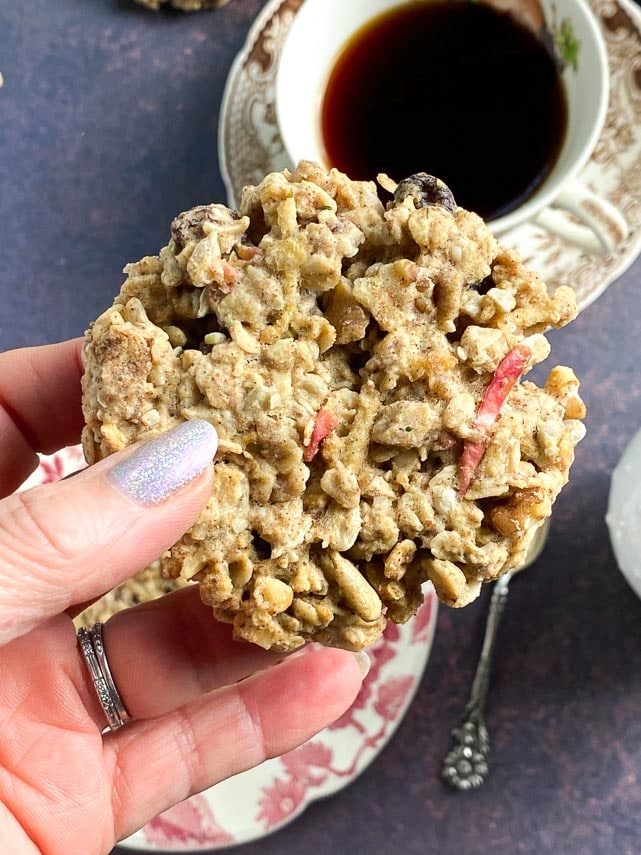
Sunflower seeds are about 34% protein and are a great vegan protein source.
The Monash University smartphone app states that a mere 2 teaspoons (6 g) of hulled sunflower seeds are low FODMAP, but note that no other information is given.
Conversations with Monash researchers revealed that the low FODMAP threshold level for sunflower seeds is actually 50 g. They become Moderate for FODMAPs at 60 g, and High at 70 g. Extrapolating the math, 9 g would equal 1 tablespoon (9 g). This means a scant 3 tablespoons of sunflowers would be low FODMAP, and 50 g would provide about 10.5 g protein.
You can certainly eat sunflower seeds as a snack out of hand; they are convenient and nutritious. Sprinkle over salads, incorporate into smoothies, make a pesto, or add to granola, or other baking recipes.
How to Buy and Store
Sunflower seeds should be stored airtight in a cool, dark location.
How to Use
As the recipes below demonstrates, sunflower seeds can be used in a variety of ways. Create a trail mix, toss into salads – get creative.
Low FODMAP Vegan Sunflower Seed Recipes
- Low FODMAP Nut-Free Granola
- Low FODMAP Chewy Granola Bars
- Low FODMAP Cinnamon Apple Breakfast Cookies
Pistachios & Low FODMAP Vegan Protein

Pistachio nuts are a plant-based complete protein providing all nine essential amino acids, in addition to other nutrients and phytochemicals.
Unfortunately, they have a very small low FODMAP serving size of 7 g (1.4 g protein), which is about 10 nuts, as reported by lab testing by FODMAP Friendly.
They contain both GOS and fructans, so if you have completed your Challenge Phase, and know your tolerance to these FODMAPs, you might try more.
How to Buy and Store
Pistachios can be purchased in the shell, or shelled. As with all nuts, they contain a fair amount of fat and can go rancid. Buy small amounts and store in an airtight container in a cool, dry location.
How to Use
The small low FODMAP amount of pistachios could be enough to add to granola, sprinkle over a savory dish, incorporate into a baked good, or to eat as a snack.
Hemp Seeds & Hearts & Low FODMAP Vegan Protein
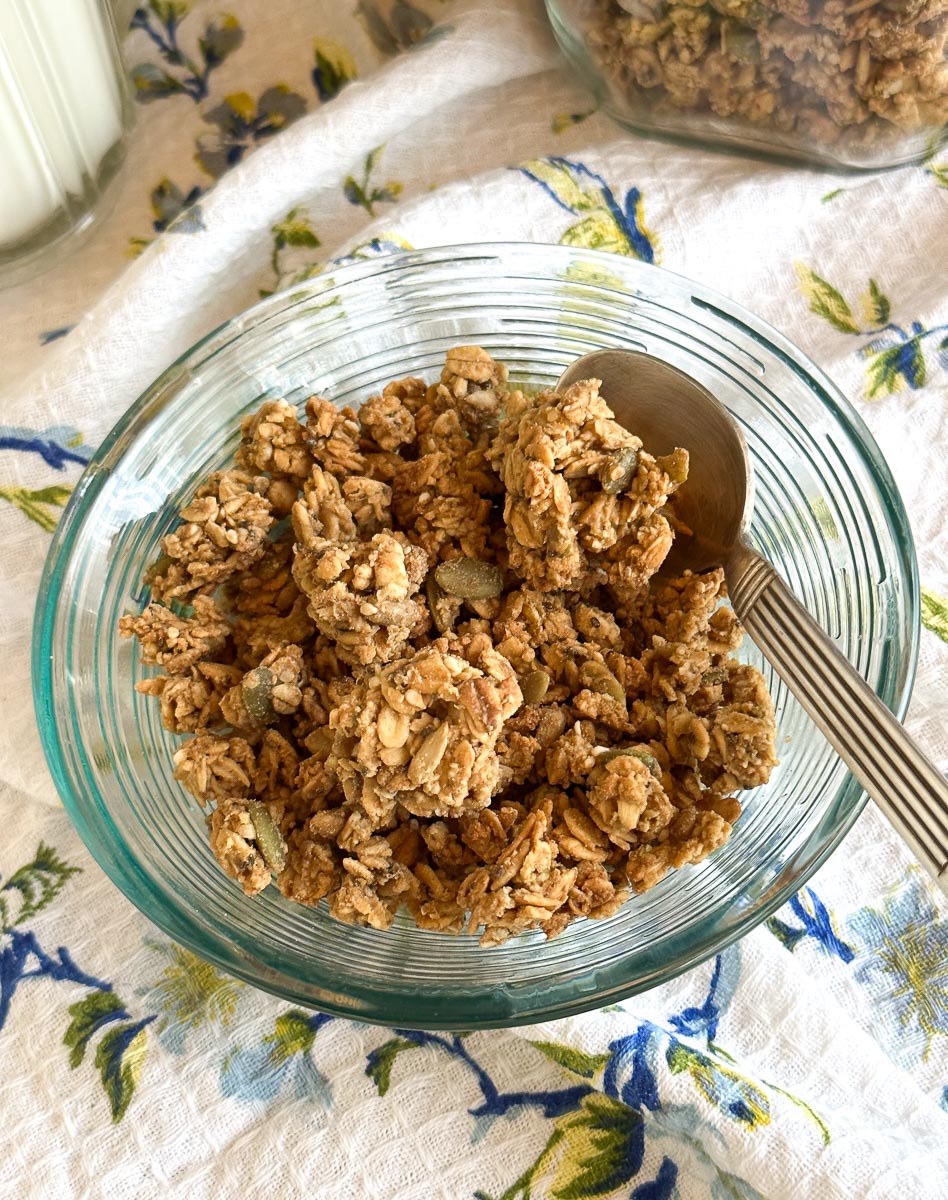
Hemp seeds , hemp hearts, and hemp protein powder have become quite popular in recent years, especially with vegans and vegetarians. They are indeed part of the Cannabis sativa plant, which is the same plant that gives us marijuana, THC (short for delta-9-tetrahydrocannabinol, and CBD (cannabidiol). Hemp seeds contain only trace amounts of THC and the psychoactive properties are not a concern in the amounts typically consumed.
Hemp seed protein offers a well-balanced array of all the essential amino acids. Notably, the amino acid profile of hemp seed is on par with that of egg white and soybean proteins. Hemp seed protein also contains sufficient amino acids to fulfill the dietary needs of young children (2–5 years old), aligning with the recommendations set forth by the Food and Agriculture Organization (FAO) and the World Health Organization.
Hemp seeds have a very hard outer shell, which does provide some extra fiber, but what you typically find for sale are hemp hearts, which are the soft inner part of the seed. Hemp protein powder could be made from either, and should be specified on the package.
The 2 tablespoon (20 g) serving suggested by Monash University contains a little over 6 g of protein, with no further information given. FODMAP Friendly states a low FODMAP serving is 2 tablespoons (28 g), with a max low FODMAP serving of 574 g, which is a whopping 2 ½ cups!
How to Buy and Store
Seeds are perishable and we suggest storing in an airtight container in the refrigerator and using up within a few weeks.
How to Use
Hemp seeds are easy to add to smoothies, salads, or use as part of breadcrumbs in a recipe. They make a great snack, too, just to eat out of hand.
Low FODMAP Vegan Hemp Seed Recipes
- Low FODMAP High Protein Quinoa & Oat Granola
- Low FODMAP Nut-Free Granola
- Low FODMAP Pumpkin Cranberry Oat Breakfast Cookies
- Low FODMAP Cinnamon Apple Breakfast Cookies
Chia Seeds & Low FODMAP Vegan Protein
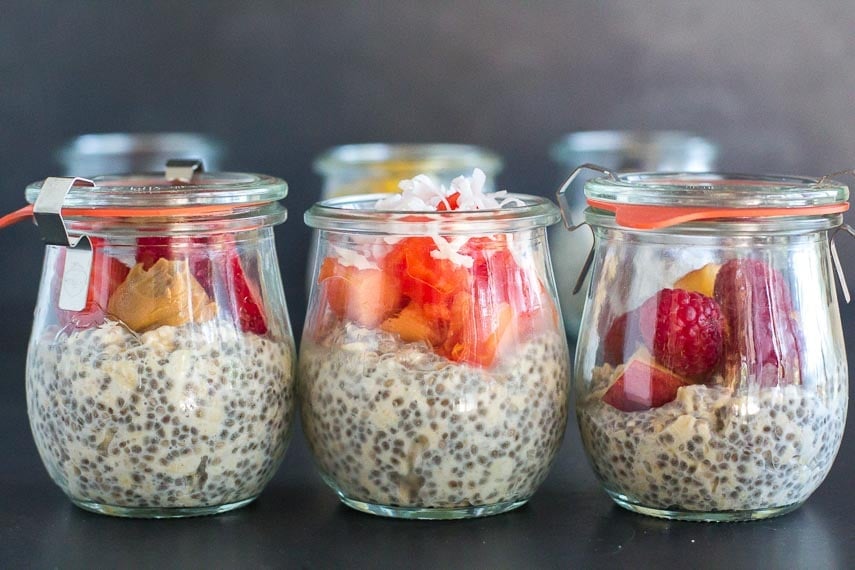
Chia seeds are a popular plant based protein source and are easy to sprinkle over sweet and savory foods, make into high-protein chia pudding, and to add to overnight oats, or smoothies.
A 2 tablespoon (24 g) serving of chia seeds provides about 4 g of protein.
Monash University has lab tested both black and white chia seeds and sets a low FODMAP serving size at 2 tablespoons (24 g) for both colors; there is no further information. FODMAP Friendly lab testing states that 1 tablespoon (10 g) is low FODMAP, and 3 tablespoons (30 g) is a Fail (for GOS).
There is no nutritional difference between the black and white varieties.
How to Buy and Store
Chia seeds are now easy to find, even via Amazon. Packages typically range from about 8-ounces to several pounds. They do become more economical in larger amounts. If you know that you will be using them regularly, buy the larger size, as they have an impressive shelf life of 4-5 years without the need for refrigeration. Simply store them in a cool, dry place in an airtight container.
How To Use
Chia seeds can be eaten whole, and do not need to be ground. They have a delicate outer layer that readily disintegrates upon contact with moisture, which is why you see them combined with water, milk, juice, alt milk or yogurt so often. This method ensures optimal absorption and digestion in their intact form, setting them apart from flax seeds, which are best consumed in a ground state. If you prefer to consume chia seeds in their dry state, selecting ground chia seeds may enhance their absorption, and will also be safer.
A noteworthy case report from the American College of Gastroenterology Annual Scientific Meeting in 2014 garnered attention. It detailed an incident in which a patient consumed dry chia seeds followed by a glass of water. These seeds expanded in the patient’s esophagus, causing an obstruction. Due to their rapid swelling when they absorb liquid, it is advisable to consume chia seeds that have been soaked in liquid or are served with moist foods, such as oatmeal or yogurt. Individuals with dysphagia, a condition that leads to difficulty in swallowing (as was the case with the aforementioned patient), or those with other digestive issues should exercise caution when consuming chia seeds.
Chia seeds are remarkably versatile.
- Sprinkle a few teaspoons into hot or cold cereal.
- Add them to salads, soups, and stews.
- Stir them into salad dressings, sauces, marinades
- Add to batters for cakes, muffins, or bread.
- Utilize chia gel (see below) as a natural thickener by incorporating it into smoothies, puddings, and soups after they have been prepared or cooked.
Chia Gel: Combine ¼ cup (48 g) of chia seeds with 1 cup (240 ml) of liquid, stir thoroughly, and cover. Allow it to rest for approximately 15 to 20 minutes until it transforms into a soft gel-like consistency. This chia gel can be stored in the refrigerator for up to one week and serves as an excellent addition to smoothies and soups, enriching their nutritional value and lending a thicker, more satisfying texture. Makes 2 low FODMAP servings.
Egg Replacer: Chia seeds can serve as a substitute for whole eggs in baking. To replace one whole egg, mix 1 tablespoon of whole chia seeds or 2 teaspoons of ground chia seeds with 3 tablespoons of water. Allow the mixture to sit for at least 5 minutes or until it thickens to a consistency resembling raw scrambled eggs. Add to recipes in place of egg. Note that unless the recipe has been specifically developed for chia eggs, the results might be subpar.
Chia Sprouts: Create chia sprouts by placing a single layer of chia seeds (approximately a teaspoon, leaving ample space for growth) on a terracotta saucer or an unglazed clay dish. Spritz the seeds with water multiple times and cover them with plastic wrap or a clear glass dish. Position them in a sunny area and continue spraying them morning and evening until vibrant green sprouts emerge, typically within 3 to 7 days. Utilize these microgreens as a garnish for salads and sandwiches. Sprouted chia seeds have not been lab tested for FODMAP content; note that lab tested sprouted foods have shown both reductions and increases in FODMAPs, so extrapolation is not straightforward. Maybe try post Challenge Phase.
Low FODMAP Vegan Chia Seed Recipes
- Low FODMAP Overnight Oats & Chia
- Low FODMAP Berry Chia Jelly
- Low FODMAP Vegan Sandwich Cookies
- Low FODMAP High Protein Quinoa & Oat Granola
- Low FODMAP Mocha Banana Smoothie
- Low FODMAP Nut-Free Granola
- Low FODMAP Banana Coconut Oat Breakfast Cookies
Spirulina & Low FODMAP Vegan Protein

Spirulina (Arthrospira plantensis) is a blue-green algae that is very rich in protein, in fact about 62% of it is made up of amino acids. You can purchase it dried and freeze-dried. It does have a very pronounced flavor that can be an acquired taste for many.
Spirulina platensis is known to be one of the richest protein sources of microbial origin, having similar protein levels compared to meat and soybeans.
Monash University has lab tested spirulina and their suggested low FODMAP serving size is 2 teaspoons (8 g), which provides 4.56 g protein;; spirulina remains low FODMAP up to 500 g. FODMAP Friendly has also lab tested spirulina and the minimum and max low FODMAP serving size is 1 teaspoon (5 g).
How to Buy and Store
Follow brand instructions.
How to Use
We treat spirulina more as a supplement than a food ingredient, as a very small amount has a very pronounced flavor. We find it best to sprinkle just a little bit into smoothies, on top of salads, stirred into soup, or try making a protein ball with it. It works well in guacamole!
Buckwheat & & Low FODMAP Vegan Protein

There are many species and two main varieties of buckwheat: common buckwheat (Fagopyrum esculentum) and tartary buckwheat (Fagopyrum tartaricum). Tartary buckwheat is also known as duckwheat, India buckwheat, India wheat, green buckwheat, or bitter buckwheat, and in general, is the more nutrient dense. However, common buckwheat is used in most food preparations.
In fact, most labels will just say “buckwheat” and not mention a variety. Unless it specifies tartary, assume your buckwheat product is common buckwheat.
Buckwheat, by the way, is not related to wheat, and it is gluten-free. It is related to rhubarb, sorrel and knotweed.
Hulled kernels are often referred to as “groats”, but the terms kernels and groats are not consistently used properly in recipes and text.
Buckwheat can be enjoyed in a variety of ways:
- Flour: Buckwheat flour is gluten-free flour with a distinct flavor (some say nutty), that can be enjoyed on the low FODMAP diet. There are two kinds: light buckwheat flour is made from ground hulled kernels; dark is made from unhulled, and therefore contains more fiber
- Noodles: Some noodles, such as certain soba, will be made from partial or all buckwheat flour. Protein content will vary; refer to labels.
- Unhulled buckwheat kernels: These are sometimes referred to as “whole” buckwheat, as the hull is intact, therefore this is the least processed form. That said, you might see the term “whole” being used on packages of hulled buckwheat.
- Hulled groats: Hulled groats are whole groats with the hull removed.
- Kasha or Roasted Groats (sometimes referred to as toasted): Kasha are roasted hulled groats that have a nutty, toasty flavor and fantastic crunch when toasted, but not further cooked. Some folks sprinkle them like this right on salads. You can dry toast in a cast-iron pan, or you can buy it already roasted.
- Flakes: Buckwheat flakes are like rolled oats: they are a rolled out, thin, flaky version of the whole grain. These are not the same as some prepared cereals, which call themselves “buckwheat flakes”, but are more like a “corn flake”, in that they are a processed food. There are pure 100% buckwheat flakes and that should be reflected on the ingredient label.
Both Monash University and FODMAP Friendly have lab tested several buckwheat products.
- Buckwheat Flour: Monash University low FODMAP serving is ⅔ cup (100g), providing 9 g protein; no further information given. FODMAP Friendly suggests a low FODMAP serving of 100g; max low FODMAP serving is 225 g.
- Wholemeal (unhulled) Buckwheat Flour: Monash University low FODMAP serving is ⅔ cup (100g) with 13 g protein; no further information given. This serving size provides about 10 g of protein.
- Cooked Buckwheat Flakes: Monash University low FODMAP serving is ½ cup (120 g); becomes Moderate for FODMAPs at 360 g. There is 6 g of protein per ⅓ cup (40 g) dry flakes.
- Cooked Buckwheat Kernels: Monash University low FODMAP serving is ⅛ cup (27 g) providing about .71 g protein; becomes Moderate for FODMAPs at 54 g.
- Cooked Buckwheat Groats: Monash University low FODMAP serving is ¾ cup (135 g); no further information given. FODMAP Friendly suggests a low FODMAP serving of ¼ cup (54 g); max low FODMAP serving is 270 g. Dry roasted groats have about 19 g protein per 1 cup (164 g).
- Cooked Soba Noodles (part buckwheat, part wheat): Monash University low FODMAP serving is ⅓ cup (90 g); no further information given. FODMAP Friendly suggests a low FODMAP serving of ⅓ cup (90 g); max low FODMAP serving is 363 g.
There are also several breads and cereals that are lab tested and certified low FODMAP. Please check your Monash University and FODMAP Friendly apps.
How to Buy and Store
Buckwheat comes in various forms and they have their own storage requirements. Follow directions on packages.
How to Use
For buckwheat flour, we suggest using recipes developed using buckwheat flour, and not substituting it 100% for wheat flour in recipes, as the recipes will not work. You could try a 25% substitution.
Buckwheat kernels and groats can be cooked and used like rice or quinoa. You can make porridge, either sweet or savory, or make a grain bowl.
Buckwheat flakes can be used in granolas or incorporated into baking recipes.
Low FODMAP Vegan Buckwheat Recipes
- Low FODMAP Vegan Sandwich Cookies
- Low FODMAP Glorious Morning Muffins (sub some sort of low FODMAP vegan egg for the eggs)
Nutritional Yeast & Low FODMAP Vegan Protein
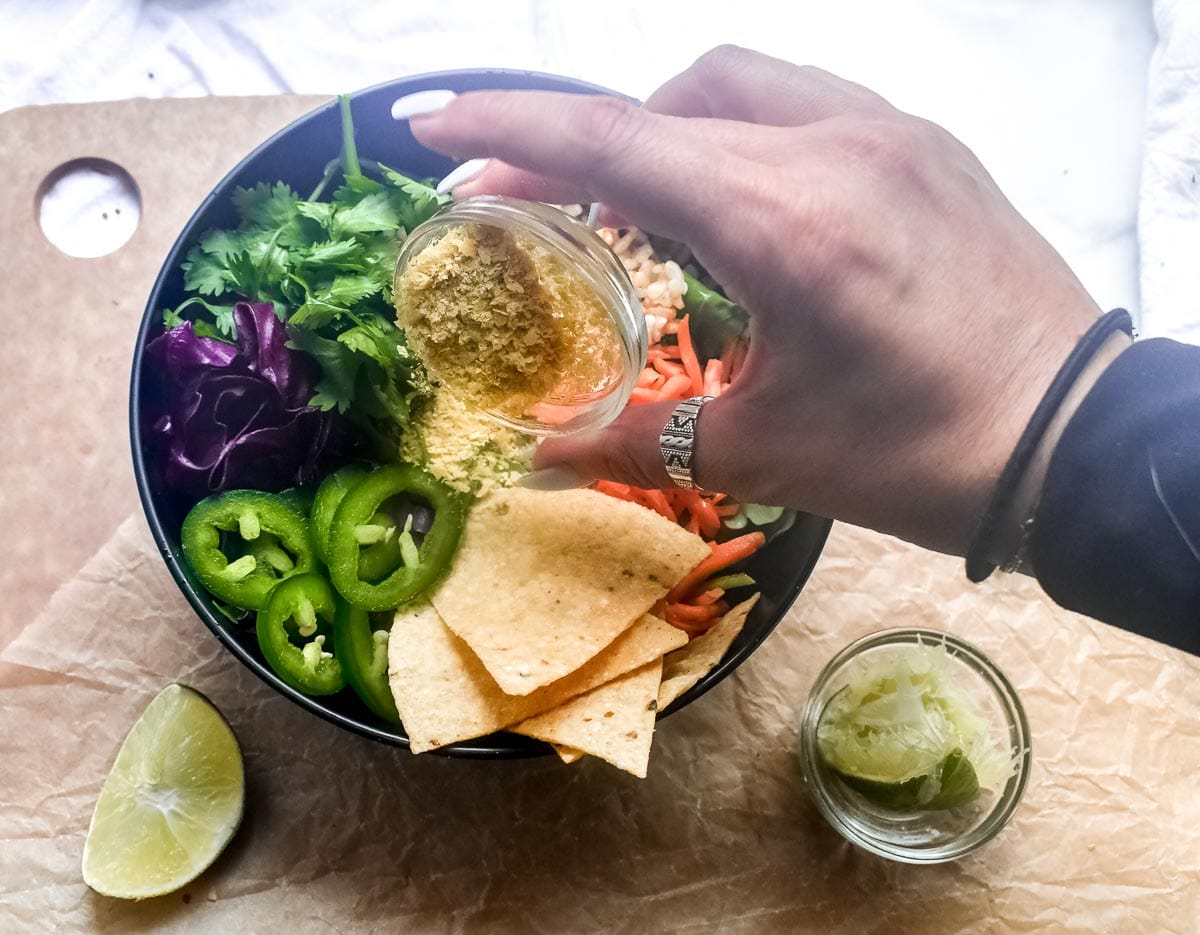
Nutritional yeast is an inactive yeast boasting a vibrant yellow hue and a distinctive, savory umami flavor reminiscent of cheese. It is often referred to as “nooch”, especially in the vegan community. It is not the same as the yeast you use to bake bread, nor is it the same as brewer’s yeast.
Also, not all nutritional yeast is the same in texture and this is a very important point, almost always overlooked in recipes and nutritional profiles. Some nutritional yeast is fine and granular, and other formulations are light and flaky. They do not weigh or measure out the same way at all (note discrepancies of volume/weight between Monash and FODMAP Friendly), and the protein will vary greatly. In addition, the textures are so different that recipes can change dramatically, and also, many find their flavor to be different, too.
We are partial to the flaky kind and always reach for Bragg’s.
Monash University has lab tested nutritional yeast and the suggested low FODMAP serving is 1 tablespoon (16 g); the small print states that nutritional yeast remains low FODMAP up to 500 g.
On the FODMAP Friendly app they are called Savoury Yeast Flakes and they have a low FODMAP serving size of 3 tablespoons (16 g); max low FODMAP serve is 165 g. Nutritional yeast contains fructans.
Flaky nutritional yeast contains about 5 g protein per 2 tablespoons (10 g).
Granular nutritional yeast contains about 8 g protein per 2 tablespoons (16 g).
Nutritional yeast also serves as an excellent vegan alternative for obtaining essential vitamin B12, a nutrient predominantly found in animal-based foods. To ensure you are meeting your nutritional needs on a vegan diet, it’s advisable to consult with a Registered Dietitian.
How to Buy and Store
Nutritional yeast has a long room temperature shelf life. Follow package directions, but we make sure to keep it airtight and dry.
How to Use
Nutritional yeast can enrich sauces and dressings, and our favorite popcorn seasoning is with extra-virgin olive oil, kosher salt, and flaky nutritional yeast.
Low FODMAP Vegan Nutritional Yeast Recipes
- Low FODMAP Baja Tempeh Taco Salad
- Loaded Low FODMAP Kale Chips
- Za’atar Spiced Low FODMAP Tofu Scramble
Seitan & Low FODMAP Vegan Protein

Seitan, known by various names such as miànjīn in Chinese, fu in Japanese, and milgogi in Korean, is a food product derived from gluten, the principal protein found in wheat. It also goes by the names wheat meat, gluten meat, vital wheat gluten, or simply gluten.
The process of creating seitan involves washing wheat flour dough with water to remove most of the starch granules, resulting in a sticky and elastic mass of insoluble gluten, which is then cooked before eating.
Wheat gluten is a classic alternative to soybean-based products like tofu, and often used as a substitute for meat. Certain recipes and brands of prepared wheat gluten possess a texture that is chewy and reminiscent of meat, making it a favored choice in various culinary traditions, including Asian, vegetarian, vegan, Buddhist, and macrobiotic cuisines. One of its common applications is in dishes resembling mock duck.
For those following the low FODMAP diet, Monash has lab tested vital wheat gluten flour and it is low FODMAP in ¼ cup (30 g) amounts, becoming Moderate for FODMAPs at ½ cup (68 g). You could try a 30 g amount of seitan. Note that while vital wheat gluten is low FODMAP, it is not gluten-free (but neither is the diet). If you buy seitan, read the labels as many are prepared with high FODMAP ingredients such as garlic.
A 30 g low FODMAP portion of seitan provides approx. 23 g of protein (depending on source).
How to Buy and Store
Seitan needs to be refrigerated. Follow package instructions.
How to Use
Our favorite way to use seitan is like tofu in stir-fries.
Sprouted Grain Bread & Low FODMAP Vegan Protein

There are many sprouted grain breads on the market, with Ezekial bread being the most well-known.
Ezekiel 4:9® Sprouted Grain Bread draws its inspiration from a passage in the Holy Scripture. In Ezekiel 4:9, it is written, “Take also unto thee Wheat, and Barley, and beans, and lentils, and millet, and Spelt, and put them in one vessel, and make bread of it…”.
The bread is made by spouting and combining the grains and legumes, creating a complete protein. The bread actually contains 18 amino acids, derived entirely from plant-based sources.
Brands will vary, but the Food for Life Ezekiel Sprouted Whole Grain Bread contains 5 g of protein per 1 slice (34 g).
While we do not know what brand was lab tested by Monash University, they state in their app that 1 slice (30 g) of “mixed grain/multigrain sprouted bread” is low FODMAP.
How to Buy and Store
Follow the manufacturer’s instructions.
How to Use
Use for sandwiches as is. Make toast, or how about breadcrumbs!
Sprouted Wheat & Low FODMAP Vegan Protein

Monash University has lab tested sprouted wheat grains and they have a hefty protein content.
The 50 g low FODMAP serving size provides 3.75 g protein.
The process of sprouting a whole grain can increase protein and fiber, and increase digestibility, but note that some items that have been lab tested sprouted have increased FODMAP content, and others have decreased. Do not try to extrapolate.
How to Buy and Store
You can buy whole wheat berries in many stores that have bulk raw grains, or you can order them online. Store in a cool, dark, dry location.
How to Use
Sprouting Instructions:
- Start by thoroughly rinsing half a cup of wheat berries and ensure there are no debris or stones present.
- Place the washed wheat berries into a quart-sized sprouting jar or any suitable sprouting container.
- Fill the container with water and cover it using a sprouting lid or a mesh sprouting cover. Allow the wheat berries to soak for at least 6 hours, or you can leave them to soak overnight.
- After the soaking period, make sure to drain all the water from the wheat berries.
- Every 8-12 hours, rinse and drain the wheat berries again. Continue this rinsing and draining process 2-3 times daily.
- You should notice tiny sprouts beginning to develop within 2-3 days. Once this happens, the sprouting process is complete.
- Before using or storing the sprouted wheat, make sure to drain it thoroughly.
To use your sprouted wheat we particularly like them tossed in salads, soups, and bread recipes, and also like making a breakfast porridge using them (similar to oatmeal).
Rice & Low FODMAP Vegan Protein
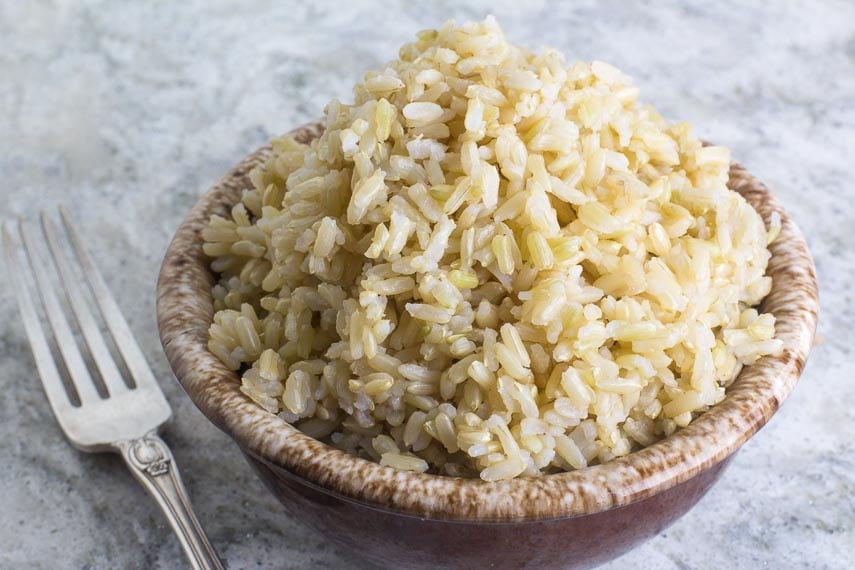
Here we will discuss brown and white rice, both of which are quite versatile and a vegan protein source that is easy to find, cook and use.
Our chart gives more detailed information, but Monash and FODMAP Friendly lab testing is nearly identical and these whole grains, cooked, yield about 5 g protein per serving, which is quite generous. (Please note that wild rice is not a rice, but a grass).
- Per Monash cooked white rice low FODMAP serving size is 1 cup (190 g), with 5.13 g protein.
- Per Monash cooked brown rice low FODMAP serving size is 1 cup (180 g), with 4.14 g protein.
- Per FODMAP Friendly cooked white rice low FODMAP serving size is 1 cup (190 g), with 5.13 g protein.
- Per FODMAP Friendly cooked brown rice low FODMAP serving size is 1 cup (190 g), with 4.37 g protein.
- Per Monash cooked red rice low FODMAP serving size is 1 cup (190 g), approx. 5 g protein.
- Per Monash cooked glutinous rice low FODMAP serving size is 1 cup (190 g), approx. 3.52 g protein.
- Per Monash cooked Arborio rice low FODMAP serving size is ½ cup (190 g), approx. 4.5 g protein.
How to Buy and Store
You can buy rice in boxes and bags, as well as in bulk, which can be more economical. Store in a cool, dark, dry location.
How to Use
People will argue the best way to cook rice. We prefer stovetop, putting rinsed rice and water in a pot, with a tight lid, bringing to a boil, lowering heat, cooking till most of the water evaporates, then turning the heat source off, and allowing the rice to steam.
Many folks are huge fans of rice cookers, and if you eat a lot of rice, we wholeheartedly recommend them.
Low FODMAP Vegan Rice Recipes
- No FODMAP Rice
- Vegan Low FODMAP Brown Rice Stuffing
- Cilantro Lime Rice
- Thai Curry Tofu & Green Beans
Farro & Low FODMAP Vegan Protein

Farro is a whole-grain believed to be the very first cultivated grain.It is an ancestor of modern wheat, and it does contain gluten. It is a great source of insoluble fiber and is also mineral rich.
It retains a plump appearance, and satisfying chewy texture when cooked.
Monash has lab tested farro and it has a low FODMAP serving size of 60 g, which offers 3.42 g of protein.
How to Buy and Store
You can buy farro in boxes and bags, as well as in bulk, which can be more economical. Store in a cool, dark, dry location.
How to Use
You can cook like pasta, in plenty of water, and then drain when done.
You can use it as a basis for grain salads, eat as a side dish, add to soups, etc.
Millet & Low FODMAP Vegan Protein

Millet, both hulled and the pearled type, have been lab tested by Monash. Millet is a whole grain that offers vegans a protein source that is very versatile and quick to cook.
Low FODMAP serving sizes are quite generous and offer about 6 g of protein.
How to Buy and Store
You can buy millet in boxes and bags, as well as in bulk, which can be more economical. Store in a cool, dark, dry location.
How to Use
You can cook like pasta, in plenty of water, and then drain it when done, or cook like rice.
You can use it as a basis for grain salads, eat as a side dish, add to soups, etc.
Wild Rice & Low FODMAP Vegan Protein

Wild rice is actually a grass and we were thrilled when Monash finally lab tested it, and even more excited to see the generous serving size and how protein packed it is!
The Monash low FODMAP serving size is 140 g cooked, which provides 5.6 g of protein!
How to Buy and Store
You can buy wild rice in boxes and bags. We typically do not see it in bulk. Store in a cool, dark, dry location.
How to Use
Cook as you do other types of rice. The grains will split open as it cooks, indicating it is done. Some people prefer to cook it like pasta in a generous amount of water, then drain.
You can use it as a basis for grain salads, eat as a side dish, add to soups, etc.
Meal Planning for Protein
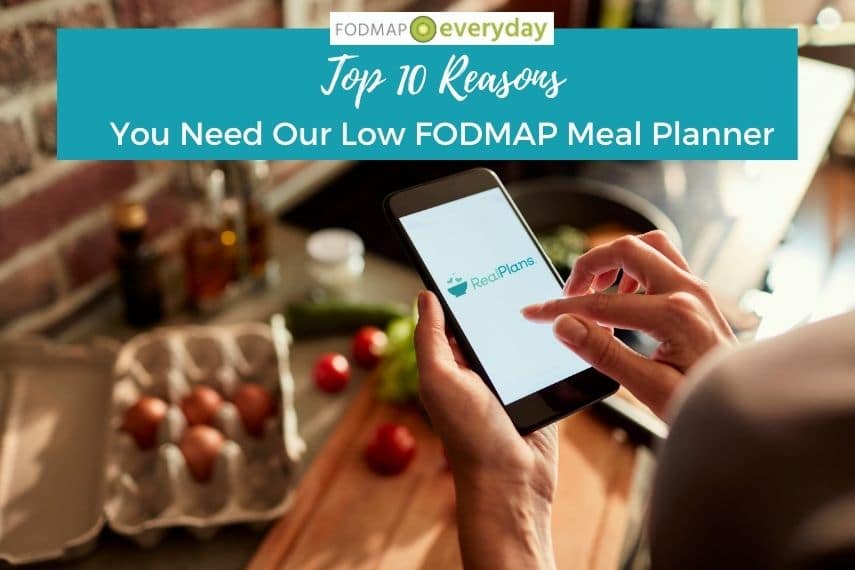
First of all, if you need help with meal planning, check out our Low FODMAP Meal Planner, the most robust one available. You can set it to only show you vegan options, and you can also set it for other needs and desires as well. Want built-in leftovers? Hate olives? Want 3 dinners, but 7 breakfasts? This Real Plans Meal Planner will cater to YOU!
It is possible to obtain enough high quality protein on a vegan diet. Here is a sample meal plans that will help you achieve almost 70 g of protein per day.
| Food Item | Kcals | CHO (g) | PRO (g) | FAT (g) | All grams rounded to one decimal point | ||||
|---|---|---|---|---|---|---|---|---|---|
| Breakfast | |||||||||
| ½ cup (40 g) oats (dry) | 160 | 29 | 6 | 2.5 | |||||
| 1 cup (125 g) blueberries | 118 | 27 | 1.3 | 0.6 | |||||
| 1 cup (240 ml) almond milk | 30 | 1 | 1 | 2.5 | |||||
| 5 (15g) walnut halves, chopped | 109.5 | 1.7 | 2.2 | 10.5 | |||||
| 1 tbsp hemp seeds | 118 | 1.7 | 6.7 | 9.5 | |||||
| 1 tbsp maple syrup | 56 | 14 | 0 | 0 | |||||
| Total: | 591.5 | 74.4 | 17.2 | 25.6 | |||||
| Snack | |||||||||
| ¼ cup (30 g) rstd chickpeas | 67 | 11.2 | 3.6 | 1 | |||||
| Lunch | |||||||||
| 1 cup (155 g) cooked quinoa | 174 | 30.8 | 6.4 | 2.8 | |||||
| ½ cup (90 g) edamame | 94.4 | 7.7 | 8.4 | 4 | |||||
| 1 tbsp nutritional yeast | 20 | 1.5 | 2.5 | 0 | |||||
| ½ medium tomato | 13.6 | 2.4 | 0.4 | 0.3 | |||||
| ½ cucumber w skin | 22.6 | 5.5 | 1 | 0.2 | |||||
| 1 cup (50 g) baby spinach | 6.6 | 1.2 | 0.2 | 0.1 | |||||
| 1 teaspoon olive oil | 43 | 0 | 0 | 4.6 | |||||
| Total: | 374 | 49.1 | 22.32 | 12 | |||||
| Snack | |||||||||
| 1 naval orange | 69 | 17.6 | 1.3 | 0.2 | |||||
| 2 rice cakes | 70 | 14.7 | 1.5 | 0.5 | |||||
| 2 tbsp natural peanut butter | 184 | 6.8 | 7.5 | 15.6 | |||||
| Total: | 323 | 39.1 | 10.3 | 16.3 | |||||
| Dinner | |||||||||
| 1 cup (180 g) cooked brown rice | 134 | 27.6 | 3.1 | 1.1 | |||||
| 170g firm tofu | 119 | 2.9 | 13.9 | 7.1 | |||||
| 1 medium carrot | 25 | 5.8 | 0.6 | 0.2 | |||||
| ¾ cup (75g) broccoli head florets | 21 | 3.9 | 2.24 | 0.26 | |||||
| 1 teaspoon toasted sesame oil | 40.3 | 0 | 0 | 4.55 | |||||
| 140 g fresh pineapple chunks | 70 | 18.4 | 0.75 | 0.2 | |||||
| Total: | 409 | 58.6 | 20.6 | 13.4 | |||||
| TOTALS | 1765 | 232 | 70.42 | 68.3 | |||||
| % of daily Kcals | 52% | 16% | 35% | ~100% |
And dont’ forget to download our Low FODMAP Vegan Proteins and Serving Sizes Master List!
Click on the Red Button below!
